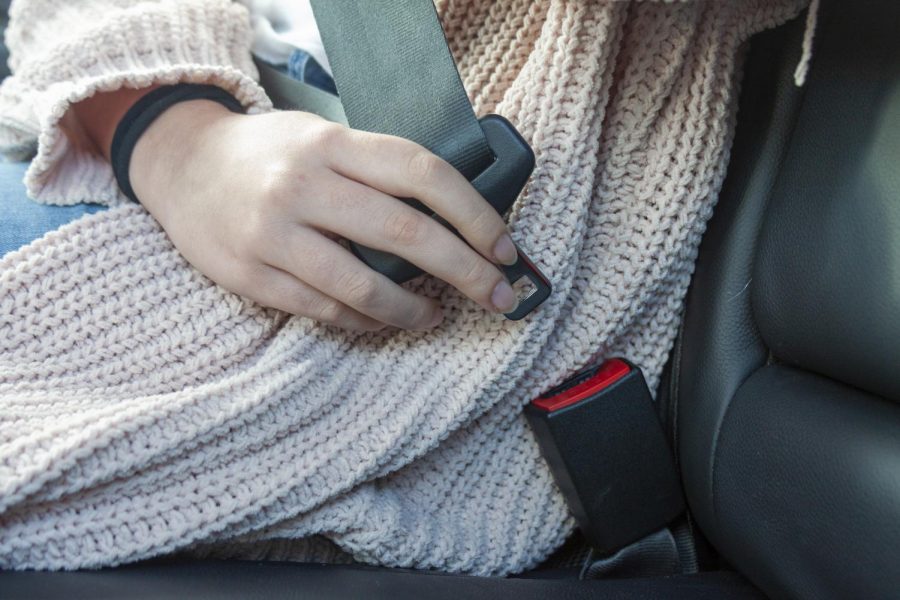The Potentially Life Altering Choice We Make Every Day
The importance in wearing a seat belt is overlooked by many.
February 12, 2020
Growing up, many of our parents acted as our chauffeurs. They would drive us to friends’ houses, to school, or even to sporting events held several hours away from home. Not buckling up in the car was never an option.
Now as high schoolers, particularly for those of us who are upperclassmen, we more often drive ourselves around, or are driven by our friends, which means that our parents aren’t always there to enforce rules upon us — one of those rules being that we wear a seat belt.
While wearing a seat belt is required by law, it remains overlooked by close to 27.5 million people who still avoid buckling up. We should always be buckled up in the car. There’s no valid reason not to, and not enough people are taking this seriously enough.
From my own perspective as a licensed teen, when a car is jammed full of passengers, buckling up is commonly ignored, mostly by others my age. When driving, I’ve even had to remind others in my car to wear their seat belt.
When I was younger, I found it more thrilling to ride in the car without buckling up. I thought it was the cool thing to do. I also enjoyed the freedom that came with breaking the rules or going against my parents’ wishes.
Eventually, I recognized the significance in wearing a seat belt after it was emphasized in the driving course I took as a sophomore with Oregon Driver’s Education Center (ODEC).
Originally, I wasn’t thrilled to be spending three hours after school, two days a week, being lectured about driving, but I ended up valuing the experience as it genuinely taught me how to be a considerably safer driver.
During the course, I learned the acronym L.S.M.I.L.E. The “S” in the acronym was a reminder to put on my seat belt, and ever since then, buckling up has been the first thing I do after getting into my car.
Do you care about your personal safety? If so, you should be buckling up too.
It only takes seconds to strap into a seat belt, and the simple idleness or rebelliousness of not wanting to buckle up can have major consequences. Not only do those consequences include the potential of being pulled over and fined roughly $100 in Oregon, but it could also pose serious injury or even death. For instance, in 2017, 10,076 Americans who chose not to use seatbelts were killed in car accidents. In addition to this, in 2016, 58% of 818 teen drivers along with 569 teen passengers who died in crashes, weren’t buckled up.
As uncomfortable as it may be, it’s up to all of us to stand up to those who don’t wear seat belts.
Without the protection of a seat belt during a crash, passengers are more likely to slam their head into the windshield or be thrown from their vehicle.
For senior Lauren Patrick, this was put into perspective last year after a drunk driver sped through a red light and rammed into the right, front corner of her car. Fortunately, she was wearing a seat belt. Unfortunately, the driver who hit her was not.
Since the driver who hit Patrick wasn’t buckled up, he was thrown out of his seat, and slammed his head into the windshield, shattering it. As a result of this, he also experienced multiple head injuries.
“I know that if the man in the other car had been wearing his seat belt his injuries would have been much less severe,” Patrick said. “Sometimes they might be annoying, but you never know when you could be in an accident.”
Many might argue that wearing a seat belt is unnecessary when traveling short distances; however, close to 52% of car crashes occur within a five mile radius of a person’s home, providing justification that seat belts should be worn no matter the distance traveled. And with car accidents occurring very often, drivers and passengers should always expect the unexpected. An easy way to do this is by wearing a seat belt.
More often than not, buckling up can save our lives — similar to the 15,000 buckled accident victims that survived in 2017.
Everyone is capable of wearing their seat belt. Strapping in should require no hesitation, and should be prioritized when getting into any vehicle. It’s not worth risking our safety, nor our lives.






Madalena • Mar 13, 2020 at 6:51 pm
Great article! All very good points!